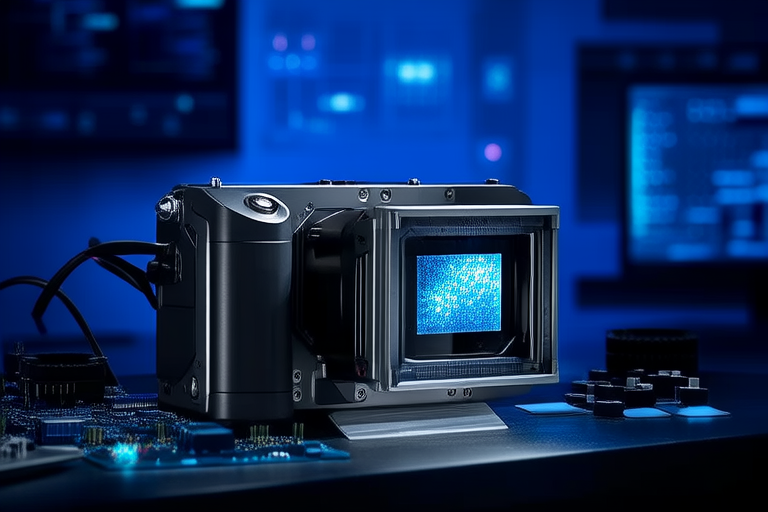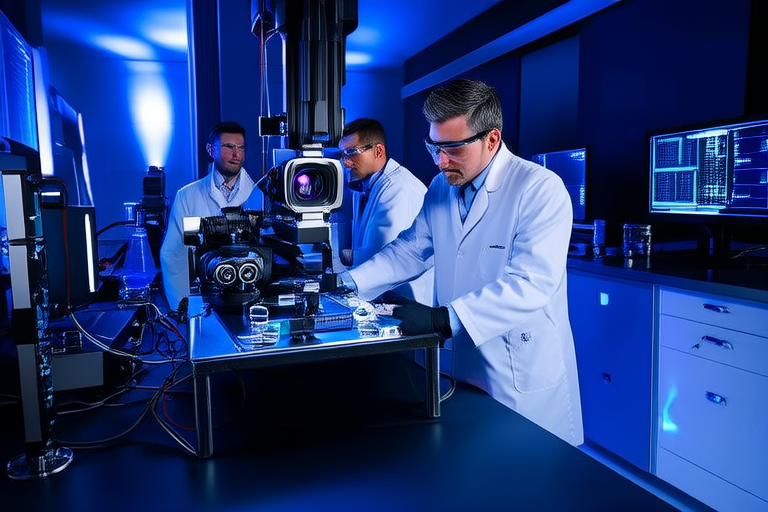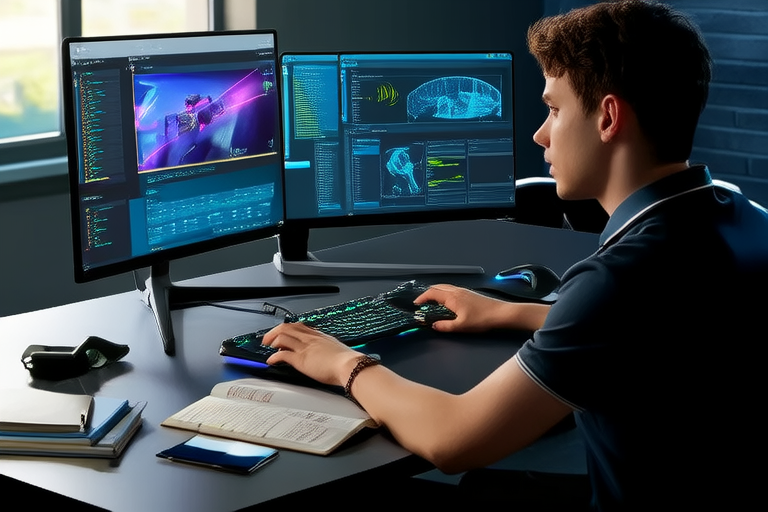The Rise of Computer Vision: From Concept to Reality
Introduction:
Computer vision is a rapidly evolving field within artificial intelligence (AI) that focuses on enabling machines to interpret and understand visual data from the world around them. By analyzing images and videos, computer vision systems can recognize objects, track movements, and even predict actions. This technology has emerged from a theoretical concept to a practical application, playing an increasingly significant role in today’s technological landscape. From autonomous vehicles to medical diagnostics, computer vision is transforming industries and enhancing our daily lives.
Once a mere idea in academic circles, computer vision has now become a cornerstone of modern technology, powering everything from smartphones to industrial robots. As the technology continues to advance, its potential applications seem almost limitless. This article explores the journey of computer vision, from its origins to its current state, and looks ahead to its future prospects.
Historical Context:
The history of computer vision can be traced back to the mid-20th century when researchers first began exploring the possibility of teaching machines to see. In 1966, Marvin Minsky, a pioneer in AI, initiated the Summer Vision Project at MIT, aiming to create a system capable of recognizing simple objects in photographs. Although this initial attempt was unsuccessful, it laid the groundwork for future research.
One of the earliest breakthroughs in computer vision came in 1979 with the introduction of the SIFT (Scale-Invariant Feature Transform) algorithm by David Lowe. This algorithm allowed computers to identify and match keypoints in images, regardless of scale, rotation, or illumination changes. Another milestone was achieved in 2012 when AlexNet, a convolutional neural network (CNN), won the ImageNet Large Scale Visual Recognition Challenge (ILSVRC). This victory demonstrated the power of deep learning in image recognition, propelling computer vision into the mainstream.
These early developments set the stage for rapid advancements in the field, leading to the creation of more sophisticated algorithms and systems capable of performing complex tasks.
Core Technologies:
The core technologies that enable computer vision include image processing, deep learning, neural networks, and machine learning algorithms. Each of these components plays a crucial role in the functioning of computer vision systems.
Image processing involves manipulating digital images to improve their quality or extract useful information. Techniques such as filtering, edge detection, and segmentation are commonly used to preprocess images before they are analyzed by machine learning models.
Deep learning, particularly through CNNs, has revolutionized the field of computer vision. These neural networks consist of multiple layers that automatically learn hierarchical representations of input data. By training on large datasets, CNNs can accurately classify objects, detect faces, and recognize patterns in images.
Machine learning algorithms, especially those based on supervised and unsupervised learning, help computer vision systems make sense of the vast amounts of visual data they encounter. These algorithms allow machines to learn from experience, improving their performance over time without explicit programming.
Together, these technologies enable computer vision systems to interpret visual data with remarkable accuracy and speed, making them indispensable tools in a wide range of applications.
Applications:
Computer vision has found applications across numerous industries, significantly impacting sectors such as healthcare, automotive, retail, security, and entertainment.
In healthcare, computer vision is used for medical imaging analysis, aiding doctors in diagnosing diseases like cancer and identifying abnormalities in X-rays and MRIs. For example, Google’s DeepMind has developed algorithms that can detect eye diseases with high precision, potentially saving millions of people from blindness.
The automotive industry has embraced computer vision to develop autonomous vehicles. Companies like Tesla and Waymo use advanced cameras and sensors to enable self-driving cars to perceive their environment, navigate roads safely, and avoid obstacles.
Retailers are leveraging computer vision to enhance customer experiences and streamline operations. Amazon Go stores use cameras and sensors to track shoppers’ movements and purchases, eliminating the need for checkout lines. Additionally, computer vision can optimize inventory management by automatically counting stock levels and detecting misplaced items.
Security systems benefit from computer vision through facial recognition technology, which can identify individuals in real-time. Law enforcement agencies use this capability to monitor public spaces, while businesses employ it for access control and surveillance.
In the entertainment industry, computer vision powers special effects in movies and video games, allowing for realistic animations and interactive experiences. It also enables virtual reality (VR) and augmented reality (AR) applications, providing immersive environments for users.
Challenges and Limitations:
Despite its many successes, computer vision systems face several challenges and limitations. One of the primary concerns is accuracy, as even small errors in object recognition or scene interpretation can have serious consequences. Bias in training data can lead to unfair outcomes, particularly in applications involving sensitive topics like race, gender, or age.
Privacy concerns arise when computer vision systems collect and analyze personal data, raising questions about consent and data protection. Ethical considerations, such as the potential misuse of facial recognition technology, further complicate the deployment of these systems.
To address these challenges, researchers are working on developing more robust algorithms that can handle diverse datasets and minimize bias. Efforts are also being made to establish ethical guidelines and regulations governing the use of computer vision technologies.
Future Prospects:
The future of computer vision holds immense promise, with emerging trends and advancements poised to further enhance its capabilities. As AI continues to evolve, we can expect more sophisticated models that can understand context and reasoning, enabling machines to perform even more complex tasks.
Advancements in hardware, such as faster processors and improved sensors, will accelerate the development of real-time computer vision systems. Edge computing, which processes data closer to where it is generated, promises to reduce latency and increase efficiency.
Potential breakthroughs, such as quantum computing and neuromorphic chips, could revolutionize the field by offering unprecedented computational power and energy efficiency. These innovations may lead to breakthroughs in areas like real-time 3D reconstruction and holographic displays.
As computer vision becomes more integrated into everyday life, it will likely play a pivotal role in shaping the future of technology. From smart cities to personalized medicine, the possibilities are endless, and the impact on society will be profound.
Conclusion:
From its humble beginnings as a theoretical concept to its current status as a practical application, computer vision has come a long way. Its ability to interpret visual data has transformed industries and enhanced our daily lives. As the technology continues to evolve, it will undoubtedly play an even more significant role in shaping the future of technology.
The challenges and limitations faced by computer vision systems highlight the importance of responsible development and deployment. By addressing these issues, we can ensure that computer vision contributes positively to society, unlocking new possibilities and improving the quality of life for all.




